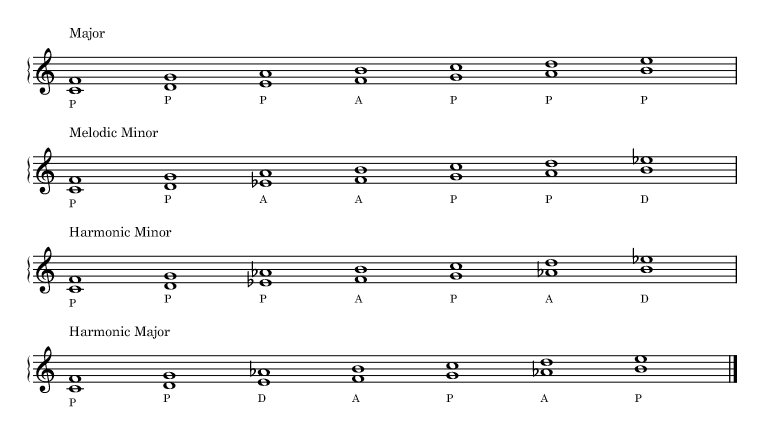More follow-ups to my recent visit to the Aebersold Summer Jazz Workshop. I attended master classes with four great jazz guitarists: Corey Christiansen, Dave Stryker, Mike Di Liddo, and Craig Wagner. All four of these musicians gave me things to work on. One of the discussions that we got into with Corey was about quartal harmony, something I had worked with him on previous visits. I decided that it would be good to do an in-depth study on this material, so I plan on doing a series of blog posts.
My ultimate goal will be to incorporate this material into my jazz comping and soloing. But I am going to start out with a high-level survey of the territory. To do this, I’ll look at quartal chords of various size, dyads, trichords, tetrachords, pentachords. For each size of chord, I’ll look at all of the different quartal chord types, that is, all of the different combinations of the interval of a fourth. I’ll also look at where these different types of chord appear in harmonizations of four different scale types: Major, Melodic Minor, Harmonic Minor, and Harmonic Major. (These four scales correspond to the twenty-eight different modes I made reference to in my previous post.)
Let’s start with dyads. There are three different qualities of fourth that I will look at: Perfect Fourth, Augmented Fourth, and Diminished Fourth. Since we are only dealing with fourths, I’ll use a simple label and just call them P, A, and D. The first figure below shows where each of these three different dyads occur in harmonizations of our four different scale types.

The next figure contains some statistics about how often each dyad type occurs in the different harmonizations.

There are a few things to note. First, it’s clear that the prefect fourth appears the most often: eighteen times out of twenty-eight in total. In a sense, this makes the perfect fourth the most ambiguous of the three dyads, since it occurs in so many contexts. Another interesting insight is concerning the augmented fourth. Since the augmented fourth only occurs once in the Major scale, it has traditionally been taken that it serves well to establish the scale type and key. In contrast, the augmented fourth appears twice in each of the Melodic Minor, Harmonic Minor, and Harmonic Major scales. This arguably makes each of these scales more harmonically ambiguous than the Major. It also strikes me that the Melodic Minor, Harmonic Minor, and Harmonic Major scales have the same number of occurrences of the different dyads P (four times), A (two times), and D (one time).
That’s it for today. Next time, I’ll do the same treatment for quartal trichords.
Leave a Reply